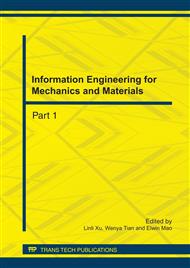p.1128
p.1133
p.1140
p.1145
p.1150
p.1155
p.1160
p.1165
p.1170
A New Non-Destructive Testing Method Used in the Axle of Landing Gear
Abstract:
The relations between stresses and leakage magnetic signal of concentration area of the airplane’s landing gear under varying load were studied. The finite element method was used to calculate the stress of axle under different conditions; An experiment was designed to simulate the stress status under the bending moment, the slight magnetic signals on specimen were measured, and the relation of the signals and stress was studied. The new testing method was explained with the theory of ferromagnetic and the significance of this technique for detecting defects of the airplane structural part was discussed. The safety of airplane’s main bearing parts plays an important role during its operation and it often comes to bad situation of fatigue damage for stress concentration [1, 2]. To prevent the breaking down of structural parts and get rid of big accidents, it becomes important and necessary to find out the early concentration and damage zone, and to make some certain examination of damage and stress status [3]. The method of magnetic memory testing would be effective for the confirming of stress concentration zone in the equipment or structural parts, and could lead the way ahead the matters of fatigue analysis, evaluation of equipment life and technological design. The method can detect the endurance failure of the airplane’s undercarriage shaft, which is composed of ferromagnetic materials, and that provides the experimental basis for the prevention of parts’ fatigue defects.
Info:
Periodical:
Pages:
1150-1154
Citation:
Online since:
July 2011
Authors:
Keywords:
Price:
Сopyright:
© 2011 Trans Tech Publications Ltd. All Rights Reserved
Share:
Citation:


